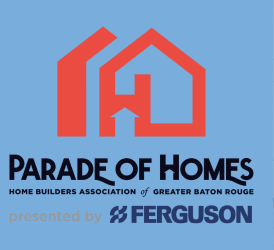Garage Slab Cracks
Garage slab cracks are caused by various conditions and show up in the slab in different ways. Two common conditions include (1) “spider cracks” generally located in the center or open area of the garage and (2) a long crack near the common wall of your house (Common-Wall Slab Crack). Carport cracks also show up in this same way.
Spider Cracks

Let’s discuss spider cracks. If you see several narrow cracks that seem to run from the center of your garage toward the outer wall (like a spider web), then we consider this slab crack condition as spider cracks. The spider cracks are labeled because of their overall pattern and generally develop because of the way the garage slab was built. There are two primary reasons spider cracks occur – loading conditions and construction conditions.
Many people are surprised to learn that the concrete slab in the middle of a garage is generally 4-5 inches thick, just like the slab thickness in the living room or bedrooms of your house. Houses are incredibly heavy, but the weight comes down on the walls and not in the middle of the rooms. So, your concrete foundation has footings under the walls, which is a thickened region of concrete that is reinforced with steel. And this technique works just fine everywhere except the garage. And that comes back to how we treat garages. We drive heavy SUV’s weighing as much as 6,000 pounds in and out of our garages many times a day. All that moving weight, which we call “live loads” may be more than the garage slab can handle. So, the concrete cracks. But fear not! The concrete is typically reinforced with steel wire to hold it together. Generally speaking, these cracks do not create a structural concern and may only be considered ugly in appearance.
Common-Wall Slab Cracks
Common-wall slab cracks are generally aligned parallel to the common wall of the house, usually 2” to 15” from the wall. Often, the crack flares away from the wall at an angle near the garage door opening.
The common-wall slab cracks occur due to construction practices and the way the concrete dries or hardens. The crack usually occurs because of the way the foundation concrete was installed. A common-wall slab crack does not necessarily mean the foundation is structurally compromised either. Although the crack is unsightly and sometimes alarming, there is nothing a homeowner can do to manage this crack other than to put sealant (caulk) in the crack. As a matter of reference to the common-wall slab crack, review the garage walls and ceilings for interior cracks.
In conclusion, spider cracks and common-wall slab cracks in the garage slab do NOT automatically mean there is a structural condition in the foundation. Often, these types of slab cracks are only cosmetic in nature and not structural related. If one observes wall cracks, corner cracks, and/or ceiling cracks in the vicinity of the common-wall slab crack, further investigation by a licensed engineer experienced in house construction may be warranted to investigate possible structural problems.




